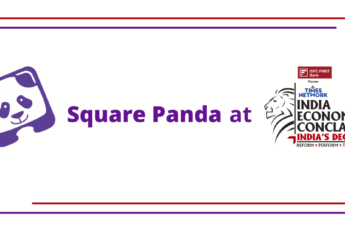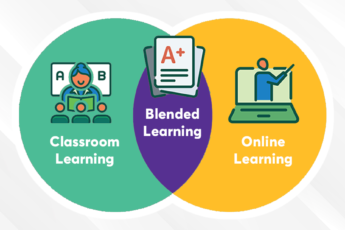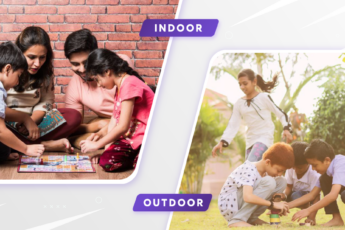How The Brain Learns To Read

Did you know that becoming literate in any language does not come naturally to young children?
A study done by UNESCO in 2012 states that approximately 250 million school-aged children across the globe hadn’t learnt how to read. Studies also show that the ability of kids to finish their education successfully is highly correlated to their ability to read proficiently by third grade. If this is not achieved, it is very difficult for children to catch up in later years.
As the internet revolution sweeps the world, developing a reading habit has never been more important. Inculcating this reading habit starts early on, and is often taught alongside other essential cognitive skills. The surface understanding is simple. Young learners are introduced to letters and their sounds. Their exposure to the language grows in complexity as they move from one level to the next, learning words, then sentences, and finally developing some level of literacy in that language.
We recognise the efforts educators make towards this goal, and have done our best to deliver a deeper understanding of the neuroscience behind developing foundational literacy skills in early childhood. We researched reading and its effect on the early brain, and this is what we learnt:
Neuroplasticity And Its Impact On The Reading Brain
- One of the most important findings in neuroscience research has been ‘neuroplasticity’, which is the ability of the brain to change and form new connections as it learns new things. These very changes are responsible for people learning to read. In fact, neuroplasticity is said to be the basis of all learning.

How It Begins:
- As a child is born, their brains form small connections with each new experience, which gradually turn into neural pathways. If unused, these connections soon disappear. However, this little learner’s brain does not automatically know how to read, because from an evolutionary point of view, the writing system is relatively new (the first writing system came about only around 5000 years ago, which is ‘new’ in evolutionary terms; the brain never needed to adapt to the task of reading). The reading skill is, as a result, an acquired one which requires many years of practice. This is where neuroplasticity kicks in, by helping teach a brain how to read. That is also why early education experts recommend reading stories to babies as young as six months of age, to enhance their neural connections.

To Preschoolers…
- Studies conducted on the reading brain show that the best impact happens when reading instruction is given to learners at the preschool and kindergarten level.
- In fact, focusing on the phonology of a language before teaching early learners the language has a bigger impact on their future education. When educators teach children to recognise letters and words, they are helping them grow new functional regions in their brain.
And Finally, To Practiced Readers:
- When a child is learning to read, what he/she is trying to do is, taking sounds of the language represented in the auditory cortex (the part of the head above the ears), and mapping it to symbols in the visual cortex (the lowest part at the back of the head). This joins together to connect and form a word. That’s why reading is a circuit; it is not a specific area of the brain. When the brain does this again and again and again, it begins to behave like a muscle. Thus, today, when you are able to read effortlessly, it is because your brain has mastered how to map these symbols and sounds together. As a consequence, over a period of time, children might start out as being auditory learners, but eventually become visual learners.

Connecting Speech To The Written Word
Before we learn how to read, words are just meaningless scribbles on a page. They are objects we don’t naturally know or come into contact with, unlike the spoken word. Every child learns to speak before they can read. He/she is exposed to vocabulary by the adults around them on a constant basis. Unfortunately, there is no link between the spoken word, and the written word (or print concepts). So far, words were the initial mode of communication for kids, and when schooling starts, suddenly, they are told that these little symbols (individual letters) are the new mode of communication. They now have to reorganize their brain to match the words to a writing system. What children try to do, as they begin to read, is figure out how to connect the words heard with the written symbols they can see.
Note: Like muscle memory, a young child’s brain slowly makes the connection between the auditory form and the visual form, and the child is now reading. That is also how an auditory learner turns into a visual learner.
Reading And The Indian Brain
- Early learners in India are the only ones in the world who learn two writing systems simultaneously–the Roman/Latin writing system (for e.g. English) and the Devanagari (for e.g. Hindi, Marathi) writing system. As a child becomes a practised reader, a specific part of their brain becomes associated with recognising letter strings, often called the ‘visual word-form area’. In adult Indians who are skilled readers of two writing systems, we find two ‘visual word-form areas’.
- Children take longer to read Indian writing systems than they do English, because of the challenges these systems pose for them – complex script, multiple writing systems, and more. Additionally, when children learn a language, in the beginning, it is the spoken word that communicates meaning. Once they start formal schooling, they are told that they have to use little symbolic representations (a.k.a. letters); now those are the relevant units for communicating.
In a study conducted by cognitive neuroscientist Dr. Nandini Chatterjee Singh, a school whose primary mode of instruction was Hindi saw much better overall results in its students than a school which taught primarily in English. This is because the early exposure of understanding word sounds in Hindi transferred to English. Her study found that gains from teaching children their native language first might be slower, but has a much bigger impact.
The above evidence proves that an Indian educator’s job is doubly hard – they are trying to inculcate lifelong reading skills into just-developing brains; plus, evolution has not caught up to them yet. Additionally, their students are being introduced to two or more languages simultaneously.
Now that you know how much of an effort reading takes and what an achievement it is, how proud will you be when your students learn new words? Stay tuned for new articles on early reading, early literacy, and Square Panda India, and visit ecce.squarepanda.in for information on our teaching-learning programs that focus on building a more literate India.




Leave a Comment